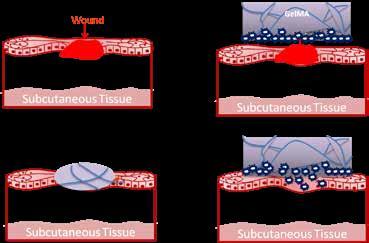
In clinical practice, sutures, staples and clips are widely used as conventional wound closure devices. These devices have to be administered invasively, thus leading to discomfort to the patients also poses increase risk of microbial infestation at the wound site and take a long time to repair. To minimise and/ or eliminate the high chances of infection and transmission of blood-borne diseases associated with suturing, tissue adhesives have garnered importance in tissue repair as sealants. Ideally, tissue adhesives should be sterilisable, nontoxic, biodegradable, mechanically stable throughout the healing procedure, and minimise infection during the recovery process.While widely used synthetic tissue adhesives like cyanoacrylates are histotoxic and have less tensile strength, naturally derived sealants like fibrin glue are susceptible to proteolytic degradation. The shortcomings of synthetic sealants have led scientists to focus on naturally derived tissue adhesives like gelatin and gellan, which are biocompatible and can be degraded by cells in vivo. Our research group is trying to develop a gellan-gelatin hybrid hydrogels embedded with growth factors and silver nanoparticles as suitable tissue adhesives that are sturdy, induce wound healing, and exhibit antimicrobial properties. Fabrication of hybrid gels comprising of gelatin and gellan gum (a non- toxic FDA approved polysaccharide) may serve as an optimal tissue adhesive. In addition to providing mechanical strength, two key features of a hybrid gellan-gelatin hydrogel system include the possibility of functionalising growth factors to stimulate wound healing in a time-dependent manner, and adding nanoparticles for providing antimicrobial activity (refer image). In short, these hydrogels would potentially minimise medical complications due to blood loss, hasten wound healing, and minimise infection throughout the recovery.
Prof. Shamik Sen
